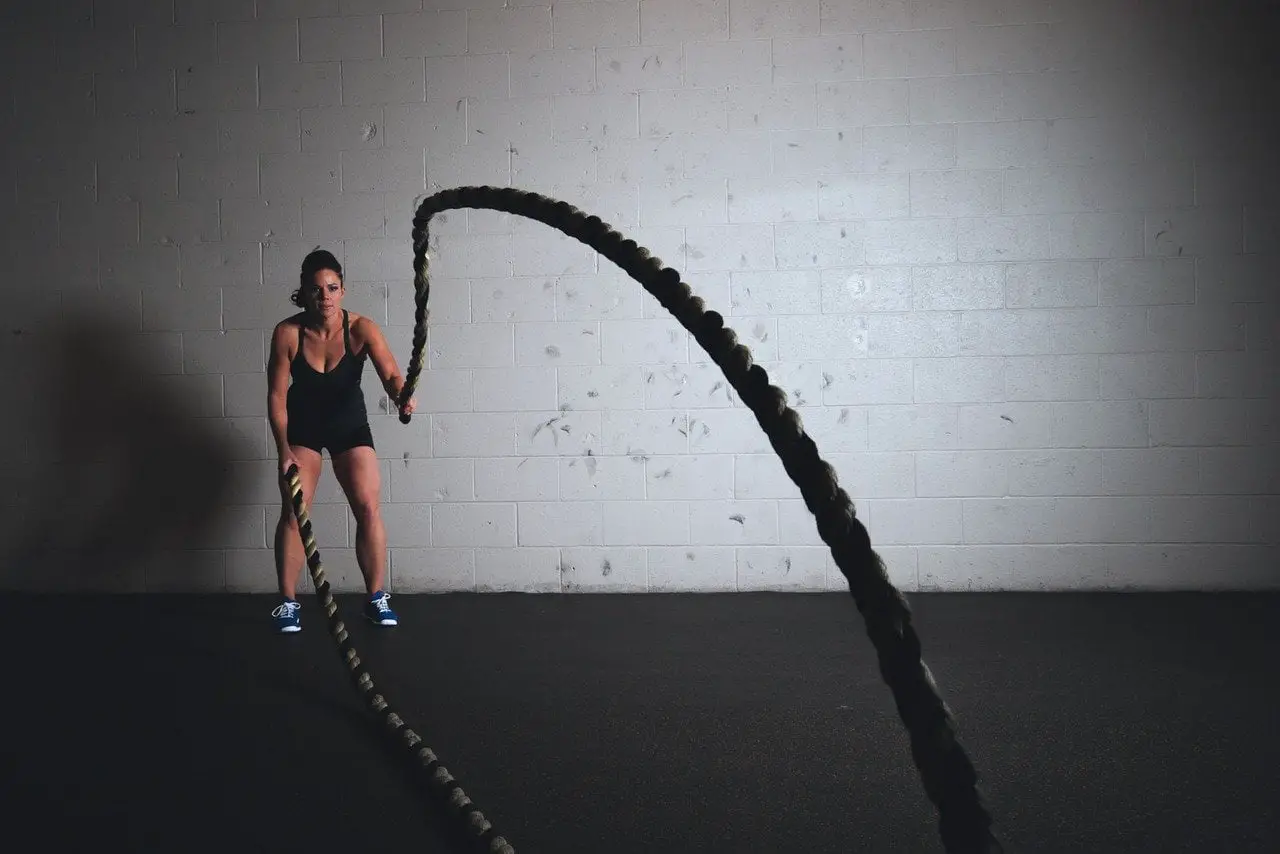There are many types of muscle activation that causes tension in your muscle as it shortens.
As a result, it will help you build mass and strength.
But, do you know how to maximize this activation? And, why would calcium deficiency limit muscle contractions?
What Is Muscle Contraction?
Muscle contraction is the activation of tension-generating sites within muscle fibers.
Messages from the nervous system cause these muscle contractions which make skeletal muscles contract and relax to mechanically move the body.
While under tension, the muscle may lengthen, shorten, or remain the same.
It generates tension with the help of motor neurons (Nerve cells forming part of a pathway along which impulses pass from the brain or spinal cord to a muscle).
The whole process is called the mechanism of muscle contraction and its termination is followed by muscle relaxation, which is a return of the muscle fibers to their low tension-generating state.
Muscle contraction is the response a muscle has to any kind of stimuli where the result is variation in length and development of force.
What Are The Types Of Muscle Contractions?
Muscle contraction during exercise is divided into three categories (Yes, you can divide them into 2, 4 or even 5, we’ll get into that in just a second) depending on how the muscle contacts and whether it is lengthening or shortening.
The main three types of muscle contractions are:
Isotonic Muscle Contractions
Isotonic contractions are those where the muscle changes its length as it contracts whilst the load or resistance remains the same.
There are two types of isotonic contraction:
Concentric Contractions — Muscle Actively Shortening
A concentric contraction is a type of muscle contraction in which the muscles shorten while generating force, overcoming resistance.
For example, when lifting a heavyweight, a concentric contraction of the biceps would cause the arm to bend at the elbow, lifting the weight towards the shoulder.
Eccentric Contractions — Muscle Actively Lengthening
An eccentric contraction results in the elongation of a muscle while the muscle is still generating force; in effect, resistance is greater than the force generated.
Eccentric contractions can be both voluntary and involuntary.
Voluntary Eccentric Contraction
This would be the controlled lowering of the heavyweight raised during the above concentric contraction.
Involuntary Eccentric Contraction
It may occur when weight is too heavy for a muscle to bear and so it is slowly lowered while under tension.
Isometric Muscle Contraction
In contrast to isotonic contractions, isometric contractions generate force without changing the length of the muscle, common in the muscles of the hand and forearm responsible for grip.
Meaning that, the muscle contraction required to grip but not move a heavy object prior to lifting would be isometric.
Isometric contractions are frequently used to maintain posture.
Isokinetic Contractions
This is another type of muscle contraction similar to Isotonic, where they differ is that Isokinetic contractions produce movements of a constant speed.
To measure it, a special piece of equipment known as an Isokinetic dynamometer is required.
Examples of using Isokinetic contractions in day-to-day and sporting activities are rare, that’s why some people don’t count it as a type of muscle contraction.
What Triggers A Muscle Contraction?
The muscular system is responsible for functions such as maintenance of posture, locomotion, and control of various circulatory systems.
The muscle contraction cycle is triggered by calcium ions binding to the protein complex troponin, exposing the active-binding sites on the actin.
As soon as the actin-binding sites are uncovered, the high-energy myosin head bridges the gap, forming a cross-bridge.
Why Is Muscle Contraction Important?
Muscle is a highly-specialized soft tissue that produces tension which results in the generation of force.
The integrated action of joints, bones, and skeletal muscles produces obvious movements such as walking and running.
In addition to movement, muscle contraction also fulfills some other important functions in the body, such as posture, joint stability, and heat production.
The skeletal muscles are continually making fine adjustments that hold the body in stationary positions.
Also, the tendons of many muscles extend over joints and in this way contribute to joint stability.
This is particularly evident in the knee and shoulder joints, where muscle tendons are a major factor in stabilizing the joint.
Moreover, heat production, to maintain body temperature, is an important by-product of muscle metabolism.
As a matter of fact, nearly 85% of the heat produced in the body is the result of muscle contraction.
That’s why muscle contraction is so important.
What Happens During Muscle Contraction?
A muscle contraction consists of a series of repeated events.
First, calcium triggers a change in the shape of troponin and reveals the myosin-binding sites of actin beneath tropomyosin.
Then, the thin actin and thick myosin filaments slide past each other.
It is generally assumed that this process is driven by cross-bridges that extend from the myosin filaments and cyclically interact with the actin filaments as ATP is hydrolyzed.
The repetition of these events causes a muscle to contract.

What Starts A Muscle Contraction?
According to visiblebody.com muscle contraction begins when the nervous system generates a signal.
The signal, an impulse called an action potential, travels through a type of nerve cell called a motor neuron.
When the nervous system signal reaches the neuromuscular junction a chemical message is released by the motor neuron.
The chemical message, a neurotransmitter called acetylcholine, binds to receptors on the outside of the muscle fiber.
That starts a chemical reaction within the muscle.
What Causes A Muscle Contraction To Stop?
Relaxing skeletal muscle fibers, and ultimately, the skeletal muscle begins with the motor neuron, which stops releasing its chemical signal.
Without the ability to form cross-bridges between the thin and thick filaments, the muscle fiber loses its tension and relaxes.
Thus, making the muscle contraction stop.
Which Element Is Essential For Muscle Contraction?
Nutrients affect your muscles’ ability to contract, with specific minerals playing a role in muscle contraction
A balanced diet usually provides all of the essential minerals.
Below, you can find the main elements necessary for muscle contraction.
Sodium and Potassium
Sodium and potassium play essential roles in muscle contraction because of their importance in nerve function.
Plus, they ensure a proper fluid balance.
A loss of either mineral prevents your nerves from communicating properly with your muscle fibers, leading to muscle weakness.
Calcium and Magnesium
Calcium and magnesium work together to control muscle contraction.
This cycle is triggered by calcium ions binding to the protein complex troponin, exposing the active-binding sites on the actin.
Then, rely on magnesium to relax after a contraction.
Keep reading, to discover why would calcium deficiency limit muscle contractions?
How Does Calcium Affect Muscle Contraction?
We all know that calcium is essential for strong bones and teeth.
But, how about its critical roles in muscle contractions and cellular metabolism?
Calcium’s positive molecule is important to the transmission of nerve impulses to the muscle fiber via its neurotransmitter triggering release at the junction between the nerves.
So, why would calcium deficiency limit muscle contractions?
Like we mentioned earlier, calcium triggers contraction by reaction with regulatory proteins that in the absence of calcium prevent interaction of actin and myosin.
Simply put, without Calcium, Troponin (a protein that regulates muscular contraction) returns to its original shape and position as does the attached Tropomyosin (a protein that modulates actin-myosin interaction).
This means that Tropomyosin is now back in position, in contact with the Myosin head (A superfamily of motor proteins best known for their roles in muscle contraction).
So, the Myosin head is no longer in contact with Actin (A family of globular multi-functional proteins that form microfilaments.)
And, therefore, the muscle stops contracting.
What Causes Lack Of Calcium In The Body?
Calcium is a vital mineral. Your body uses it to build strong bones and teeth. And to maintain a proper heart and muscle function.
So, what causes a lack of calcium in the body? There many reasons that cause Calcium deficiency such as:
- Low protein levels in your blood
- Low levels of magnesium
- Too much phosphorus
What Are The Symptoms Of Lack Of Calcium?
Hypocalcemia, commonly known as a calcium deficiency disease, occurs when calcium levels in the blood are low.
A long-term deficiency can lead to:
- Muscle problems
- Extreme fatigue
- Nail and skin symptoms
- Dental Problems
Final Thoughts – Why Would Calcium Deficiency Limit Muscle Contractions?
Calcium is very essential in muscle contraction, building strong bones and teeth.
The Ca ions and proteins bond to actin play a crucial role in both muscle cell contraction and relaxation.
We hope this article about why would calcium deficiency limit muscle contractions helps you understand the key role of Calcium in muscle contractions and cellular metabolism.
Want maximum stamina, increased strength and more lean muscle mass? Check our favorite supplements that helped more than +500,000 people achieve their body goals quickly!


